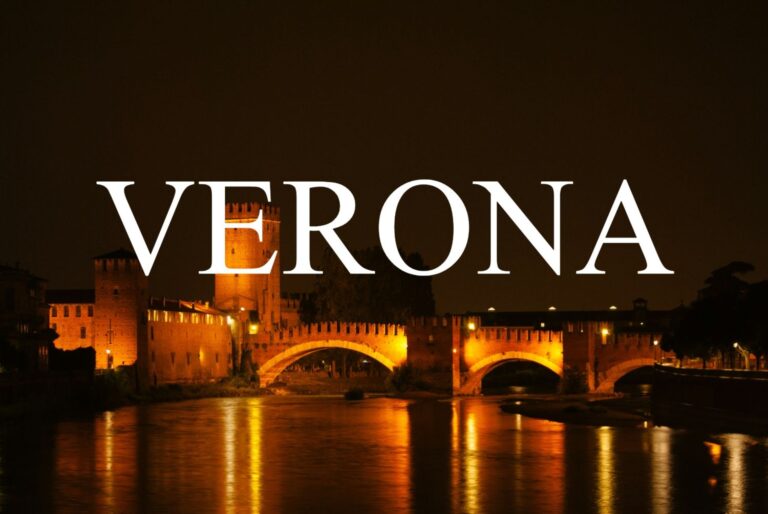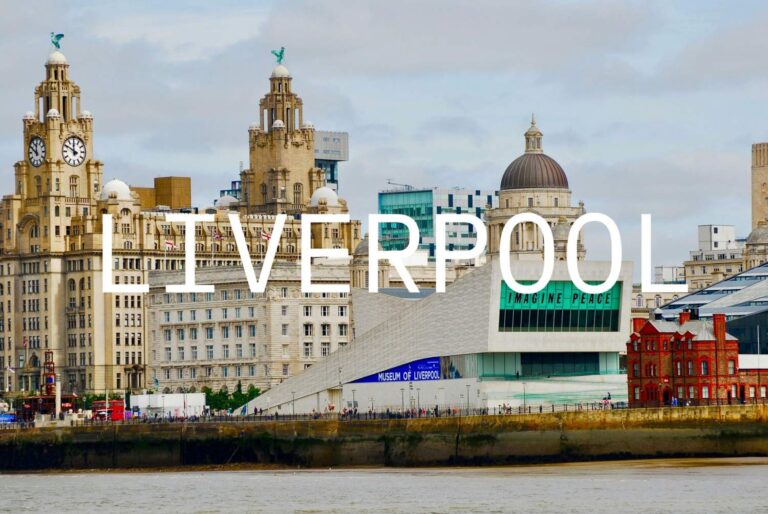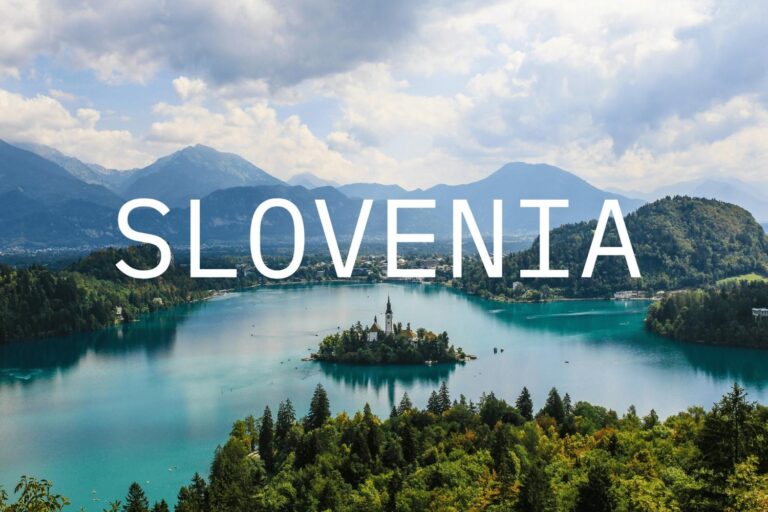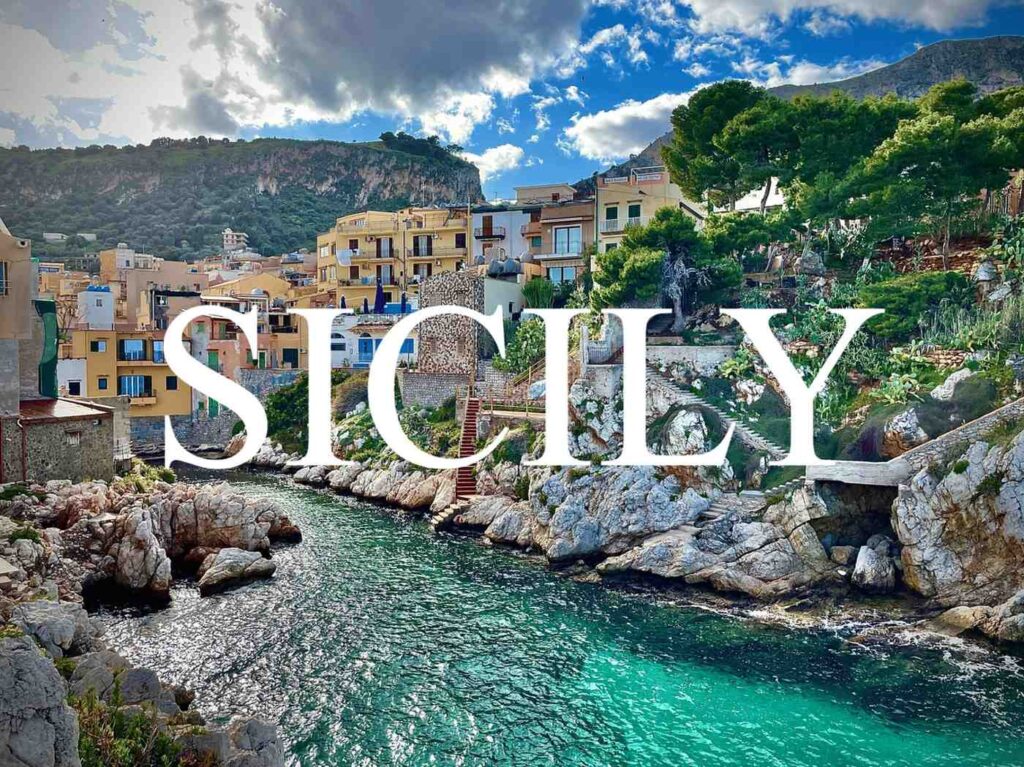
Sicily, the largest island in the Mediterranean Sea, is a treasure trove of history, culture, and natural wonders. Steeped in millennia of rich heritage, Sicily showcases breathtaking ancient ruins like the Valley of the Temples in Agrigento and the well-preserved Greek Theatre in Taormina. The island’s dramatic landscapes are dominated by Mount Etna, Europe’s most active volcano, offering thrilling hiking adventures and panoramic views that captivate every traveler.
Beyond its historical allure, Sicily boasts pristine sandy beaches along the turquoise coastline, perfect for sunbathing, swimming, or simply soaking in the Mediterranean charm. The island’s vibrant towns and villages—from Palermo’s bustling markets and Baroque splendor in Noto to the colorful fishing harbor of Cefalù—invite visitors to experience authentic Sicilian life and hospitality.
Sicilian cuisine is a delightful fusion of flavors influenced by Greek, Arab, Norman, and Spanish cultures, featuring fresh seafood, aromatic citrus fruits, rich cheeses, and iconic dishes like arancini, cannoli, and pasta alla Norma. Whether indulging in local street food or dining in seaside trattorias, food lovers will find Sicily an irresistible destination.
With its perfect blend of history, adventure, natural beauty, and warm Mediterranean vibes, Sicily offers travelers a truly immersive experience. Whether you’re exploring ancient archaeological sites, hiking volcanic trails, relaxing on sun-drenched shores, or savoring unforgettable meals, Sicily welcomes you with open arms to create lasting memories.
🏛️ Top Places to Visit in Sicily
Palermo
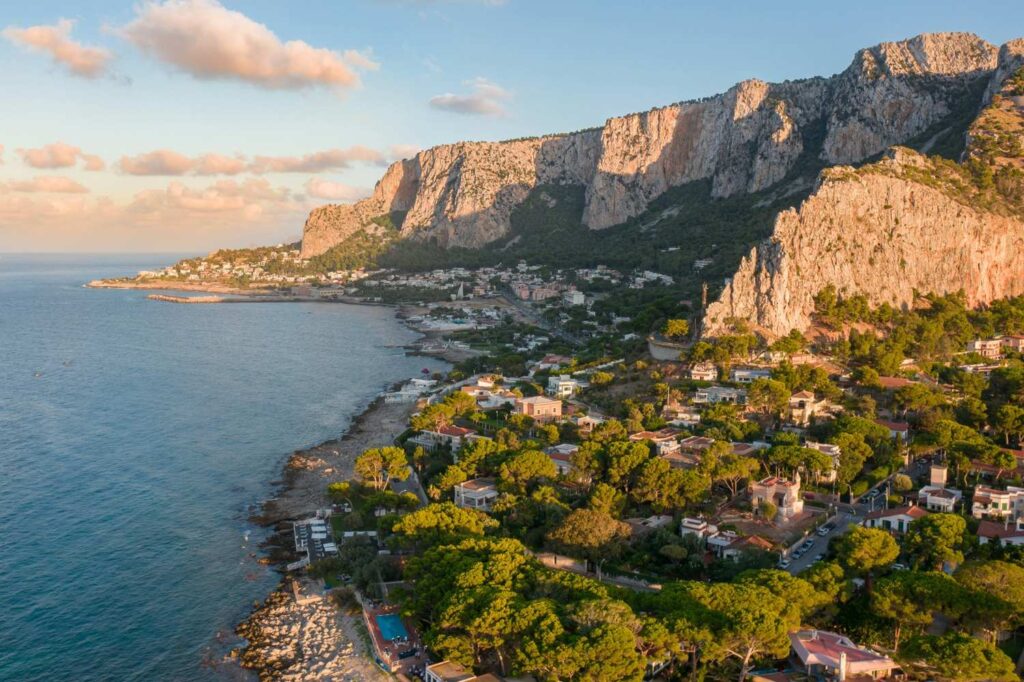
Photo by Henrique Ferreira on Unsplash
Located on the northwestern coast of Sicily, Palermo is a city where ancient history and vibrant street life collide in spectacular fashion. With its eclectic architecture, colorful markets, and centuries-old traditions, Palermo is a feast for the senses — and for adventurous travelers seeking authentic Southern Italian culture. From Norman palaces to Arab domes and bustling food stalls, the capital of Sicily offers a unique Mediterranean experience steeped in multicultural heritage.
🌟 Highlights of Palermo
🏰 Palazzo dei Normanni & Cappella Palatina
Step into Palermo’s royal past at the Palace of the Normans, once home to Sicilian kings. Inside, the Palatine Chapel dazzles with intricate Byzantine mosaics, Arab arches, and Norman artistry — a true fusion of civilizations.
⛪ Palermo Cathedral (Cattedrale di Palermo)
A must-see for its layered architectural styles, this massive cathedral showcases Norman, Gothic, Baroque, and Neoclassical elements. Don’t miss the rooftop tour for panoramic views over the city.
🍴 Mercato di Ballarò & Mercato del Capo
Experience Palermo’s famous street food at its liveliest markets. Sample arancini, panelle, sfincione (Sicilian pizza), and pane con la milza (spleen sandwich). It’s loud, messy, delicious — and 100% Palermo.
🕌 Church of San Cataldo & La Martorana
These churches in Piazza Bellini showcase Palermo’s Arab-Norman-Byzantine heritage. Admire the red domes of San Cataldo and the golden mosaics inside La Martorana — both are UNESCO World Heritage Sites.
🎭 Teatro Massimo
One of Europe’s largest opera houses and a symbol of Palermo’s grandeur. Even if you’re not attending a performance, guided tours reveal its elegant interiors and history (famously featured in The Godfather Part III).
🌿 Quattro Canti & Piazza Pretoria
The “Four Corners” of Palermo is where Baroque architecture meets everyday Sicilian life. Nearby, Piazza Pretoria boasts a fountain surrounded by stunning statues and palaces.
🚶 How to Get There
• By Air:
Fly into Palermo Falcone-Borsellino Airport (PMO), about 30 minutes from the city center.
• By Train/Bus:
Palermo is connected to other Sicilian cities (like Catania and Messina) via regional trains and buses.
• By Ferry:
Arrive by sea from Naples, Genoa, or even mainland Italy’s southern coast — a scenic option for Mediterranean travelers.
• On Foot/By Public Transit:
Palermo’s historic center is walkable, but buses and shared taxis (AMAT and shuttle vans) are available for longer distances.
🕒 Visitor Information
• Best Time to Visit:
Spring (April–June) and early autumn (September–October) offer mild weather and fewer crowds. Summer can be hot but lively with festivals.
• Language:
Italian and Sicilian dialects are widely spoken; English is common in tourist areas.
• Safety:
Palermo is generally safe for tourists, though petty theft can occur in crowded areas. Stick to well-lit streets at night.
💡 Travel Tips
• 🍝 Try a Street Food Tour:
Guided food walks help you sample authentic bites and learn the city’s culinary history.
• 🧳 Dress Comfortably:
The cobbled streets and heat can be challenging. Comfortable shoes and a refillable water bottle are essential.
• 🏛️ Check for Siesta Hours:
Many shops and sites close in the early afternoon and reopen later in the evening — plan accordingly.
• 📷 Explore Beyond the Center:
Venture to neighborhoods like Kalsa for artsy vibes, Mondello for beach escapes, or Monreale for breathtaking cathedral mosaics just outside the city.
Palermo is chaotic, charismatic, and completely unforgettable. It’s a city that doesn’t shy away from its layered identity — shaped by Phoenicians, Romans, Arabs, Normans, and Spanish rulers. Whether you’re exploring ornate cathedrals, bargaining at noisy markets, or sipping espresso in a quiet piazza, Palermo invites you to slow down and embrace the rhythm of Sicilian life. It’s more than a destination — it’s an experience of resilience, flavor, and soul.
Taormina
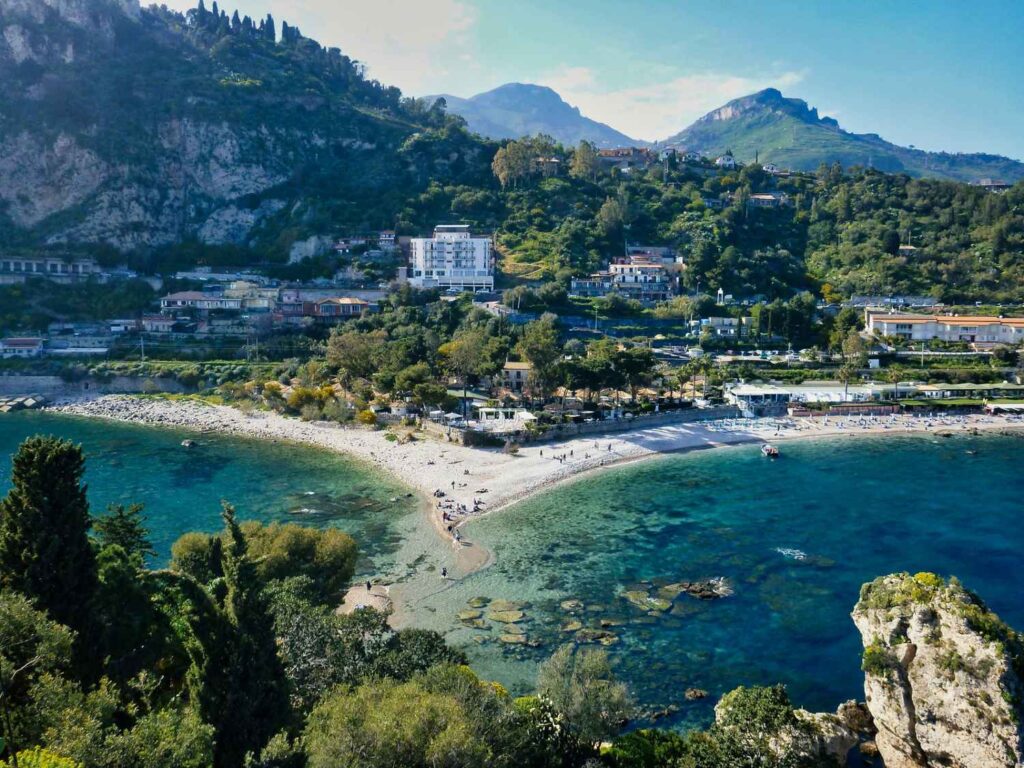
Photo by Lyle Wilkinson on Unsplash
Perched high above the turquoise waters of the Ionian Sea, Taormina is one of Sicily’s most enchanting destinations. Famous for its ancient Greek theatre, charming medieval streets, and breathtaking sea views, this hilltop town offers a perfect blend of history, culture, and natural beauty. Whether you’re wandering cobbled lanes, sipping espresso in a piazza, or soaking up the sun on nearby beaches, Taormina captures the magic of Sicilian life like nowhere else.
🌟 Highlights of Taormina
🎭 Ancient Theatre of Taormina (Teatro Antico di Taormina)
Dating back to the 3rd century BC, this remarkably well-preserved Greek theatre offers panoramic views of Mount Etna and the sea beyond. It still hosts concerts and festivals, making it a lively cultural hub.
🌺 Isola Bella
Just below Taormina’s cliffs lies this tiny island and nature reserve, known as the “Pearl of the Ionian Sea.” The pebble beach and crystal-clear waters are perfect for swimming and snorkeling during summer.
⛪ Corso Umberto
Taormina’s main pedestrian street is lined with boutiques, cafés, and historic buildings. Stroll here to experience local life, shop for Sicilian ceramics, or savor gelato while people-watching.
🏞️ Public Gardens (Giardini della Villa Comunale)
These peaceful botanical gardens, created in the 19th century, offer shaded walkways, exotic plants, and stunning views over the coastline — an ideal spot to relax and take in Taormina’s charm.
⛰️ Mount Etna Views
From many points around town, you can admire Europe’s most active volcano. Guided tours to Etna’s craters depart regularly from Taormina for adventurous travelers.
🚶 How to Get There
• By Air:
The nearest airports are Catania-Fontanarossa (CTA), about 50 minutes by car, and Reggio Calabria on the mainland.
• By Train:
The closest train station is in Giardini Naxos, about 5 km away. From there, buses and taxis can take you uphill to Taormina.
• By Bus:
Regular buses connect Taormina with Catania, Messina, and other Sicilian towns.
• By Car:
Taormina is accessible by car but parking is limited in the old town. Consider parking outside and walking or taking a shuttle.
🕒 Visitor Information
• Best Time to Visit:
Spring and early autumn offer pleasant weather and fewer tourists. Summer is lively but can get crowded and hot.
• Entry Fees:
There is an entrance fee for the Ancient Theatre. Other attractions like gardens and beaches may have small fees or be free.
• Facilities:
Plenty of restaurants, cafés, souvenir shops, and hotels cater to visitors. Tourist information centers can assist with tours and maps.
💡 Travel Tips
• 👟 Wear Comfortable Shoes:
Taormina’s streets are mostly cobbled and hilly — comfortable footwear is essential.
• 🌞 Sun Protection:
Bring sunscreen and a hat, especially if visiting beaches or hiking nearby.
• 📸 Best Photo Spots:
The Ancient Theatre’s viewpoint, the gardens, and the panoramic terraces along Corso Umberto offer stunning photo opportunities.
• 🍽️ Try Sicilian Cuisine:
Don’t miss local specialties like caponata, arancini, and fresh seafood. Many restaurants have terraces with sea views.
Taormina’s timeless beauty and vibrant atmosphere make it a top choice for travelers seeking a slice of Sicilian paradise. Its blend of ancient ruins, breathtaking landscapes, and lively culture invites visitors to explore slowly, savor every moment, and fall in love with the island’s soul. Whether you’re marveling at Mount Etna, lounging by the sea, or wandering cobblestone streets, Taormina promises unforgettable memories.
Mount Etna
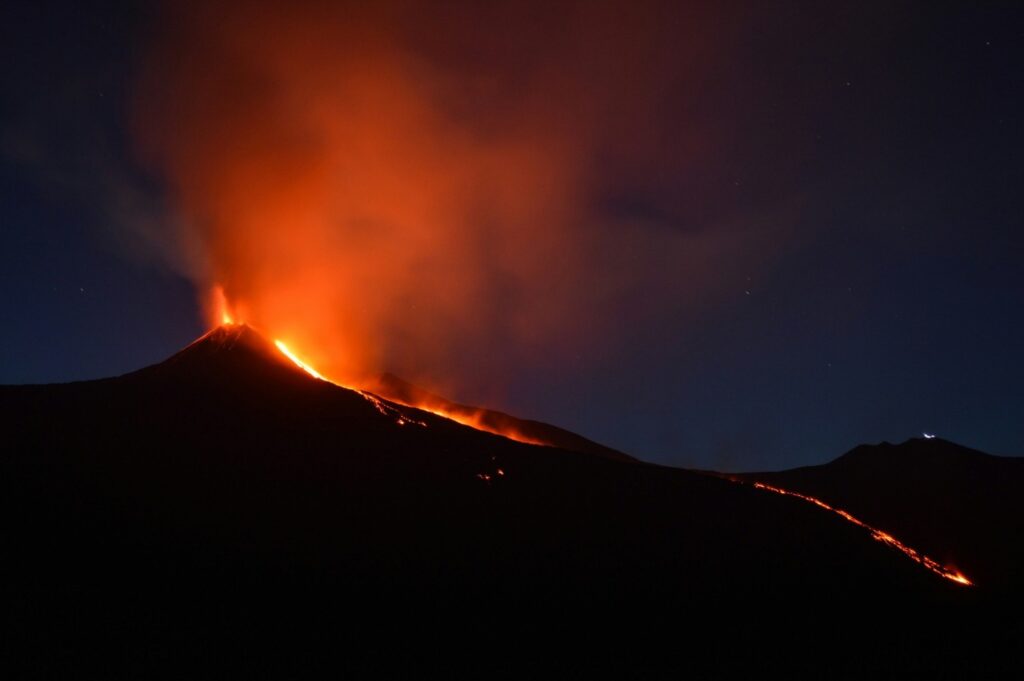
Photo by Shawn Appel on Unsplash
Rising dramatically over the eastern coast of Sicily, Mount Etna is Europe’s highest and most active volcano, captivating visitors with its powerful presence and stunning landscapes. This UNESCO World Heritage Site offers a thrilling adventure for nature lovers, hikers, and culture seekers alike. From exploring lunar-like craters to tasting volcanic wines in nearby vineyards, Mount Etna showcases the raw beauty and rich heritage of Sicily.
🌟 Highlights of Mount Etna
🔥 Volcanic Craters and Lava Fields
Etna’s ever-changing landscape is marked by vast lava flows, deep craters, and rugged terrain. Popular spots include the Summit Craters, where you can witness steaming vents and recent eruptions — a truly unforgettable sight.
🥾 Hiking & Guided Tours
Whether you’re a casual walker or an experienced trekker, Mount Etna has trails for all levels. Guided tours often include visits to the craters, lava caves, and panoramic viewpoints. For a more challenging experience, hike to the summit area (note: some zones may be restricted for safety reasons).
🚡 Cable Car & 4×4 Excursions
To reach higher altitudes with ease, take the Etna Cable Car from Rifugio Sapienza, followed by 4×4 jeep tours that explore the upper slopes and craters. These trips offer stunning views without the strenuous climb.
🍷 Etna Wine Region
The fertile volcanic soil around Etna produces some of Sicily’s finest wines. Visit local wineries for tastings of Nerello Mascalese and other varietals, paired with delicious regional cuisine.
🌿 Nature & Wildlife
The mountain is home to diverse flora and fauna, including unique alpine plants and birds. In the lower slopes, lush forests contrast with the stark volcanic landscape above.
🚗 How to Get There
• From Catania:
Mount Etna is about a 45-minute drive from Catania. Rental cars and guided tours are popular ways to reach the starting points for hikes and excursions.
• By Tour:
Many day tours operate from Taormina, Catania, and other Sicilian towns, offering transport, guides, and activities all in one package.
🕒 Visitor Information
• Best Time to Visit:
Spring through autumn is ideal for hiking and tours. Winter brings snow, transforming Etna into a skiing destination. Check volcanic activity updates before planning.
• Safety:
Always follow guidance from park authorities. Some summit areas may be closed during eruptions or hazardous conditions.
• Entry Fees:
Access to the national park is free, but cable car rides, guided tours, and jeep excursions have separate fees.
💡 Travel Tips
• 🥾 Prepare for Changing Weather:
Temperatures drop significantly at higher altitudes; dress in layers and bring sturdy hiking shoes.
• 🎒 Bring Water and Snacks:
Facilities are limited on the trails, so come prepared for your adventure.
• 📸 Best Photo Opportunities:
Sunrise or sunset visits offer dramatic lighting on the craters and surrounding landscapes.
• 🌋 Respect the Environment:
Stay on marked trails and avoid disturbing wildlife or geological features.
Mount Etna is not just a mountain — it’s a living, breathing symbol of Sicily’s dynamic landscape and resilient spirit. Whether you’re drawn by the thrill of volcanic adventure or the serene beauty of its slopes and vineyards, Etna promises an experience unlike any other. Embrace the awe of standing atop one of the world’s most fascinating natural wonders.
Valley of the Temples (Agrigento)
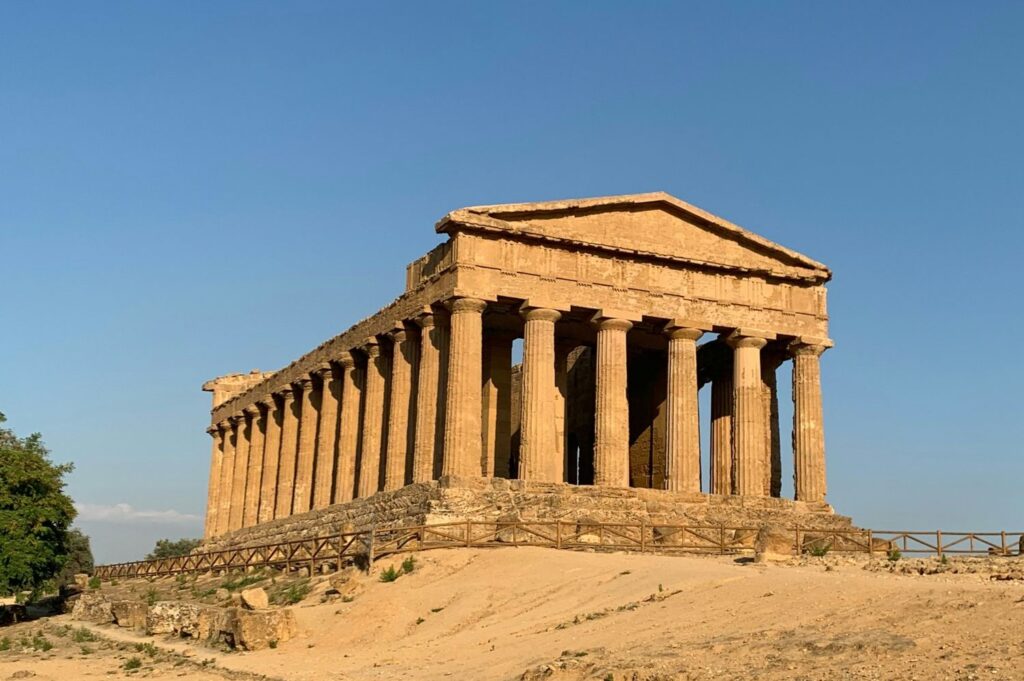
Photo by Pier Averara on Unsplash
The Valley of the Temples (Valle dei Templi) in Agrigento is one of the most extraordinary archaeological sites in the world, offering a glimpse into ancient Greek civilization amidst the stunning Sicilian landscape. This UNESCO World Heritage Site features remarkably preserved Doric temples, ancient ruins, and sprawling olive groves set against the backdrop of rolling hills and the Mediterranean Sea. Walking through the Valley of the Temples is like stepping back in time to the grandeur of Magna Graecia.
🌟 Highlights of the Valley of the Temples
🏛️ Temple of Concordia
Often considered one of the best-preserved Greek temples globally, the Temple of Concordia impresses with its classic Doric columns and harmonious proportions. Dating back to the 5th century BC, it’s a must-see symbol of ancient Greek architecture.
🏺 Temple of Hera (Juno Lacinia)
This temple stands on a hilltop with breathtaking views. Though partially ruined, its majestic columns still evoke the grandeur of ancient worship and ritual.
⚔️ Temple of Olympian Zeus
Known for its colossal scale, this temple was once home to giant statues and is a testament to the ambitious architectural feats of the ancient Greeks.
🌳 Sacred Way (Via Sacra)
This ancient road connects the temples and allows visitors to stroll through history, passing by tombs, ruins, and scenic olive groves.
🏞️ Archaeological Museum of Agrigento
Located nearby, this museum showcases artifacts excavated from the valley, providing context and enriching your understanding of the site’s history.
🚶 How to Get There
• By Car:
Agrigento is accessible by car from Palermo (about 2 hours) and Catania (about 2.5 hours). Parking is available near the archaeological site.
• By Train & Bus:
Regular trains run to Agrigento Centrale from major Sicilian cities, followed by local buses or taxis to the Valley.
• Guided Tours:
Many guided tours depart from Palermo, Catania, and nearby towns, often including transportation and expert commentary.
🕒 Visitor Information
• Opening Hours:
Usually open daily, from morning until sunset (varies seasonally). Check official schedules before your visit.
• Entry Fees:
Tickets are required for access to the archaeological park and can be purchased onsite or online. Discounts are available for students and seniors.
• Time Needed:
Plan at least 3 to 4 hours to explore the extensive grounds comfortably.
💡 Travel Tips
• 👟 Wear Comfortable Shoes:
The site is large and uneven, with dirt paths and stone steps.
• 🌞 Bring Water and Sun Protection:
There is limited shade, so sunscreen, hats, and water bottles are essential, especially in summer.
• 📸 Photography:
Allowed throughout the site — perfect for capturing the dramatic temples and panoramic views.
• 🎧 Use an Audio Guide or Hire a Guide:
To fully appreciate the history and significance, consider an audio guide or guided tour.
The Valley of the Temples is a breathtaking journey into the heart of ancient Greek culture and Sicilian history. Its awe-inspiring temples, scenic surroundings, and rich heritage make it a must-visit for travelers eager to connect with the past while soaking in the timeless beauty of the Mediterranean. A visit here promises not only historical insights but also unforgettable views and moments of wonder.
Syracuse (Ortigia Island)
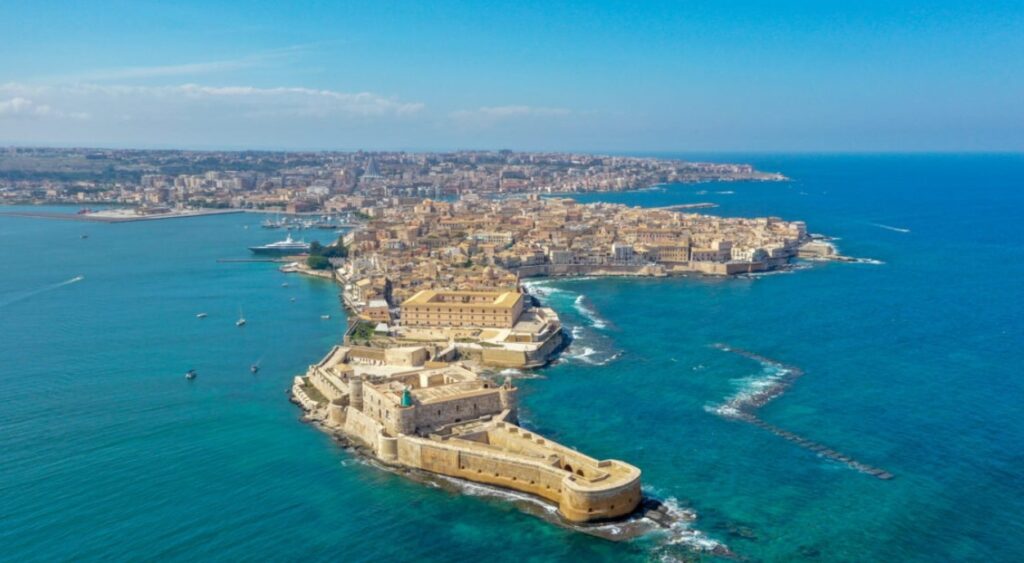
Nestled on the small island of Ortigia, the historic center of Syracuse, this enchanting destination blends ancient history with lively Mediterranean charm. With its labyrinth of narrow streets, Baroque architecture, stunning sea views, and archaeological treasures, Ortigia offers an unforgettable Sicilian experience. Whether you’re exploring ancient ruins, savoring fresh seafood by the harbor, or watching the sunset over the Ionian Sea, Syracuse’s Ortigia Island captivates visitors with its timeless allure.
🌟 Highlights of Syracuse (Ortigia Island)
🏛️ Ancient Greek and Roman Ruins
Explore the Temple of Apollo, one of Sicily’s oldest Doric temples, and the nearby Greek Theatre, where ancient dramas still echo. Don’t miss the Roman Amphitheatre, showcasing the city’s rich classical past.
⛪ Syracuse Cathedral (Duomo di Siracusa)
Built over the ancient Temple of Athena, this magnificent Baroque cathedral combines layers of history, with Greek columns visible inside its walls and ornate frescoes and sculptures adorning its interior.
🌊 Fountain of Arethusa
A freshwater spring just steps from the sea, this legendary fountain is entwined with local myths and surrounded by papyrus plants, making it a picturesque spot for photos and relaxation.
🏖️ Seafront and Harbor
The vibrant harbor area offers a lively atmosphere with cafés, seafood restaurants, and stunning views of fishing boats bobbing in the water.
🎨 Museums and Art
Visit the Museo Archeologico Regionale Paolo Orsi for one of Sicily’s finest archaeological collections or enjoy local galleries showcasing Sicilian art and crafts.
🚶 How to Get There
• By Air:
The nearest airport is Catania-Fontanarossa, approximately an hour’s drive from Syracuse.
• By Train:
Regular trains connect Syracuse with Catania, Palermo, and other major cities. The train station is a short bus or taxi ride from Ortigia.
• By Car:
Driving is straightforward, but parking on Ortigia is limited; many visitors park on the mainland and walk or take a shuttle across the bridge.
🕒 Visitor Information
• Best Time to Visit:
Spring and autumn offer mild weather and fewer crowds. Summer is popular but can be hot and busy.
• Entry Fees:
Most outdoor sites in Ortigia are free to explore; some museums and archaeological sites require tickets.
• Time Needed:
Plan at least one full day to enjoy Ortigia’s highlights; two days allow a more relaxed pace.
💡 Travel Tips
• 👟 Wear Comfortable Shoes:
Ortigia’s streets are cobbled and sometimes uneven.
• 🍴 Try Local Cuisine:
Savor fresh seafood, arancini, and Sicilian pastries at seaside trattorias.
• 📸 Best Photo Spots:
The cathedral square, Fountain of Arethusa, and the harbor at sunset are perfect for stunning shots.
• 🎧 Guided Tours and Audio Guides:
Available to enrich your understanding of Ortigia’s layered history.
🌟 Nearby Attractions
• 🏛️ Neapolis Archaeological Park:
Just a short drive away, featuring the famous Greek Theatre and Ear of Dionysius cave.
• 🏝️ Vendicari Nature Reserve:
A beautiful coastal reserve with pristine beaches and walking trails, about an hour away.
• 🌆 Syracuse Old Town:
Beyond Ortigia, explore the modern town’s shops, markets, and cultural venues.
Syracuse’s Ortigia Island is a living museum where history, culture, and Mediterranean life blend seamlessly. Its rich archaeological sites, vibrant street life, and stunning coastal views make it a must-visit on any Sicilian itinerary. Whether you’re wandering ancient temples or enjoying a leisurely meal by the sea, Ortigia invites you to experience the soul of Sicily in every step.
Cefalù
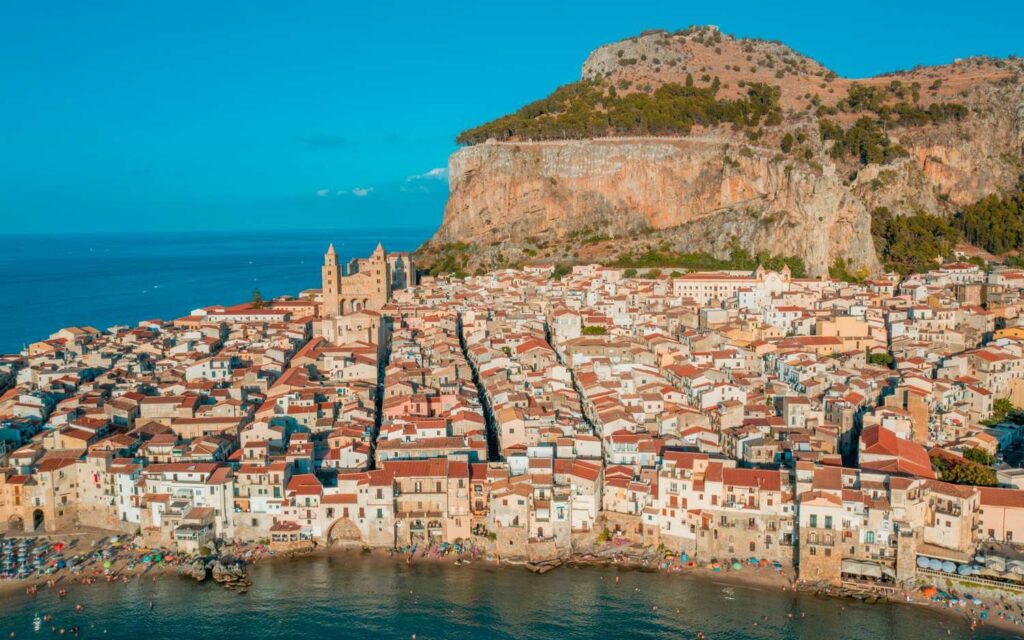
Photo by Henrique Ferreira on Unsplash
Nestled along the northern coast of Sicily, Cefalù is a picturesque medieval town famed for its stunning beaches, historic architecture, and vibrant local culture. With a dramatic backdrop of rugged cliffs and crystal-clear waters, Cefalù offers an ideal mix of relaxation, history, and authentic Sicilian charm. Whether you’re wandering through its narrow streets, exploring ancient monuments, or soaking up the sun on its golden beach, Cefalù captivates visitors with its timeless beauty.
🌟 Highlights of Cefalù
⛪ Cefalù Cathedral (Duomo di Cefalù)
This iconic Norman cathedral, built in the 12th century, is renowned for its impressive twin towers and breathtaking Byzantine mosaics inside. A UNESCO World Heritage Site, it stands as a testament to Cefalù’s rich medieval history.
🏝️ The Beach and Lungomare
Cefalù’s long sandy beach stretches along the town’s seafront promenade, perfect for sunbathing, swimming, and seaside strolls. The Lungomare is lined with cafés, gelaterias, and seafood restaurants with spectacular sea views.
🏞️ La Rocca
For panoramic vistas, hike up La Rocca, the massive rocky hill overlooking Cefalù. Along the way, you’ll discover ancient ruins, including a temple dedicated to the god Diana, and breathtaking views of the town and coastline.
🌆 Historic Old Town
Cefalù’s charming streets are filled with artisan shops, quaint piazzas, and lively markets. Explore local boutiques for ceramics, lace, and Sicilian delicacies.
🏛️ Museo Mandralisca
This small museum hosts an eclectic collection of art, archaeology, and historical artifacts, including the famous portrait “Il Tiranno” by Antonello da Messina.
🚶 How to Get There
• By Train:
Cefalù is well connected by regular trains from Palermo and Messina, making it an easy day trip or overnight destination.
• By Car:
Located about an hour east of Palermo, the drive offers scenic coastal views. Parking is available on the town outskirts with pedestrian access to the center.
🕒 Visitor Information
• Best Time to Visit:
Late spring to early autumn offers the best beach weather and lively festivals. July and August are busiest, so early booking is recommended.
• Entry Fees:
Most outdoor attractions like the beach and old town are free. The Cathedral and Museo Mandralisca have small entrance fees.
• Time Needed:
Plan at least a full day; two days or more allow for a more relaxed pace and beach time.
💡 Travel Tips
• 👟 Comfortable Footwear Recommended:
Cobblestone streets and uphill paths require sturdy shoes.
• 🌞 Sun Protection:
Bring sunscreen and a hat, especially for beach and hiking days.
• 🍽️ Taste Sicilian Specialties:
Try local seafood dishes, caponata, and traditional pastries like cannoli at seaside trattorias.
• 📸 Best Photo Spots:
The Cathedral facade, views from La Rocca, and the sunset-lit beach are perfect for photography.
Cefalù combines breathtaking coastal scenery with rich history and a warm, inviting atmosphere. It’s a perfect destination for travelers seeking both cultural discovery and seaside relaxation. With its stunning cathedral, lively streets, and gorgeous beach, Cefalù invites you to experience authentic Sicily at its best.
Noto
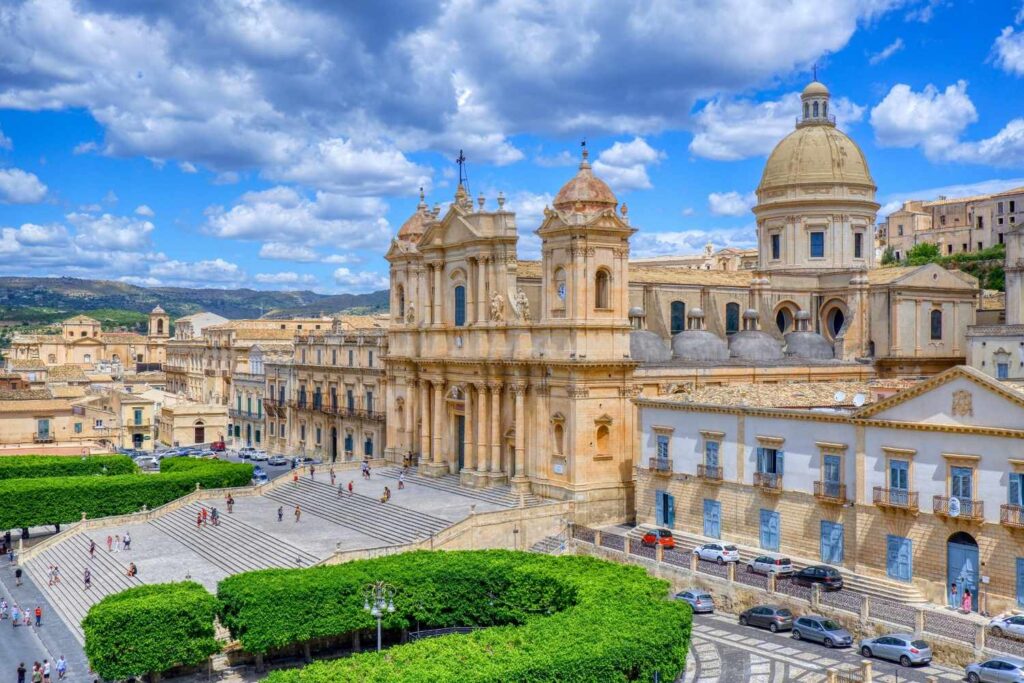
Photo by Antonio Sessa on Unsplash
Nestled in southeastern Sicily, Noto is a dazzling town celebrated worldwide for its magnificent Baroque architecture and charming streets. Often called the “Capital of Sicilian Baroque,” Noto enchants visitors with its golden-hued buildings, elegant churches, and vibrant cultural scene. A UNESCO World Heritage Site, Noto offers a perfect blend of history, art, and Sicilian lifestyle — ideal for travelers eager to immerse themselves in the island’s rich heritage and stunning beauty.
🌟 Highlights of Noto
⛪ Noto Cathedral (Cattedrale di San Nicolò)
The grand cathedral dominates the town’s skyline with its impressive façade and soaring bell tower. Inside, you’ll find beautiful frescoes, intricate carvings, and an atmosphere that reflects centuries of devotion and craftsmanship.
🏛️ Palazzo Ducezio
Located in the main square, this elegant palace houses the town hall and features exquisite Baroque design. The surrounding Piazza del Municipio is a lively spot perfect for people-watching and soaking in local life.
🌺 Corso Vittorio Emanuele
Noto’s main street is lined with stunning palaces, boutique shops, and charming cafés. Strolling here lets you admire intricate balconies, ornate doorways, and the town’s golden limestone glowing in the sunlight.
🎭 Festivals and Events
Noto hosts vibrant events like the Infiorata di Noto in May, where the streets are carpeted with elaborate flower mosaics, and the Noto Jazz Festival, attracting music lovers from all over.
🍷 Local Cuisine and Wineries
Indulge in traditional Sicilian dishes paired with excellent wines from the nearby vineyards. Try specialties like caponata, arancini, and fresh seafood at family-run trattorias.
🚶 How to Get There
• By Car:
Noto is about a 1.5-hour drive from Catania and Syracuse, making it an accessible day trip or overnight stay.
• By Train:
Trains connect Noto with major Sicilian cities such as Syracuse and Ragusa, though schedules can be limited.
• By Bus:
Regional buses provide connections from nearby towns and cities.
🕒 Visitor Information
• Best Time to Visit:
Spring and autumn offer pleasant weather and fewer crowds. Summers can be hot but lively with festivals.
• Entry Fees:
Most of Noto’s beauty is enjoyed by wandering its streets freely. Some churches and museums have modest entrance fees.
• Time Needed:
Plan at least half a day to a full day to explore Noto’s highlights comfortably.
💡 Travel Tips
• 👟 Wear Comfortable Shoes:
Cobblestone streets are charming but uneven.
• 🌞 Sun Protection:
Bring sunscreen and a hat, especially if visiting in summer.
• 📸 Photography:
Golden hour is perfect for capturing the warm tones of Noto’s limestone buildings.
• 🎧 Consider a Guided Tour:
Local guides can enrich your visit with fascinating stories behind the Baroque masterpieces.
Noto is a shining example of Sicily’s rich Baroque heritage, offering visitors a blend of stunning architecture, lively culture, and warm Sicilian hospitality. Whether you’re marveling at the cathedral’s grandeur, wandering fragrant streets during the Infiorata, or savoring local flavors in a cozy café, Noto promises a captivating and unforgettable Sicilian experience.
Ragusa

Photo by Antonio Sessa on Unsplash
Set amid the rolling hills of southeastern Sicily, Ragusa is a captivating town renowned for its stunning Baroque architecture, charming alleys, and breathtaking views. Divided into two parts — the historic Ragusa Ibla and the modern upper town — Ragusa offers a perfect blend of old-world charm and contemporary vibrancy. As a UNESCO World Heritage Site, Ragusa’s ancient churches, palaces, and piazzas tell stories of resilience and beauty, inviting travelers to explore its artistic heritage and warm Sicilian spirit.
🌟 Highlights of Ragusa
⛪ Ragusa Ibla
The heart of the old town, Ragusa Ibla is a labyrinth of narrow streets, Baroque buildings, and hidden squares. Stroll through this atmospheric area to discover ornate churches, cozy cafés, and artisan shops.
🏛️ Duomo di San Giorgio
This magnificent Baroque cathedral is Ragusa’s architectural crown jewel. Its grand staircase, intricate façade, and beautifully decorated interior are unforgettable highlights.
🌿 Giardino Ibleo
A serene public garden overlooking the valleys, perfect for a peaceful break while enjoying panoramic views of the town and countryside.
🏺 Palazzo Arezzo di Trifiletti
A historic palace showcasing Baroque elegance, located near the main square and offering insight into Ragusa’s noble past.
🍽️ Sicilian Cuisine
Ragusa is famous for its culinary scene, with traditional trattorias serving dishes like cavatelli pasta, ricotta-stuffed ravioli, and caponata, alongside excellent local wines.
🚶 How to Get There
• By Car:
Ragusa is about a 2-hour drive from Catania and Palermo, easily accessible via Sicily’s road network. Parking is available near Ragusa Ibla.
• By Train and Bus:
Train stations are located in nearby towns, with bus connections to Ragusa town center.
🕒 Visitor Information
• Best Time to Visit:
Spring and autumn offer mild weather and fewer tourists. Summer is lively but can be hot.
• Entry Fees:
Most outdoor sites in Ragusa Ibla are free to explore. Some churches and museums may charge a small entrance fee.
• Time Needed:
Allow at least one full day to explore Ragusa Ibla and the surrounding areas.
💡 Travel Tips
• 👟 Comfortable Shoes Are a Must:
Streets are often steep and cobbled, so sturdy footwear is recommended.
• 📸 Best Photo Opportunities:
Sunrise and sunset views from the Duomo steps and Giardino Ibleo are spectacular.
• 🍷 Try Local Wines:
Pair your meals with wines from the nearby Cerasuolo di Vittoria region, Sicily’s only DOCG wine.
• 🎧 Guided Walking Tours:
Consider joining a tour to uncover Ragusa’s rich history and Baroque secrets.
Ragusa is a must-visit for travelers seeking a blend of history, art, and authentic Sicilian culture. Its Baroque masterpieces, charming old town atmosphere, and delicious cuisine create a captivating experience. Whether wandering through Ragusa Ibla’s winding streets or savoring a traditional meal, you’ll discover the warm soul of Sicily here.
Aeolian Islands
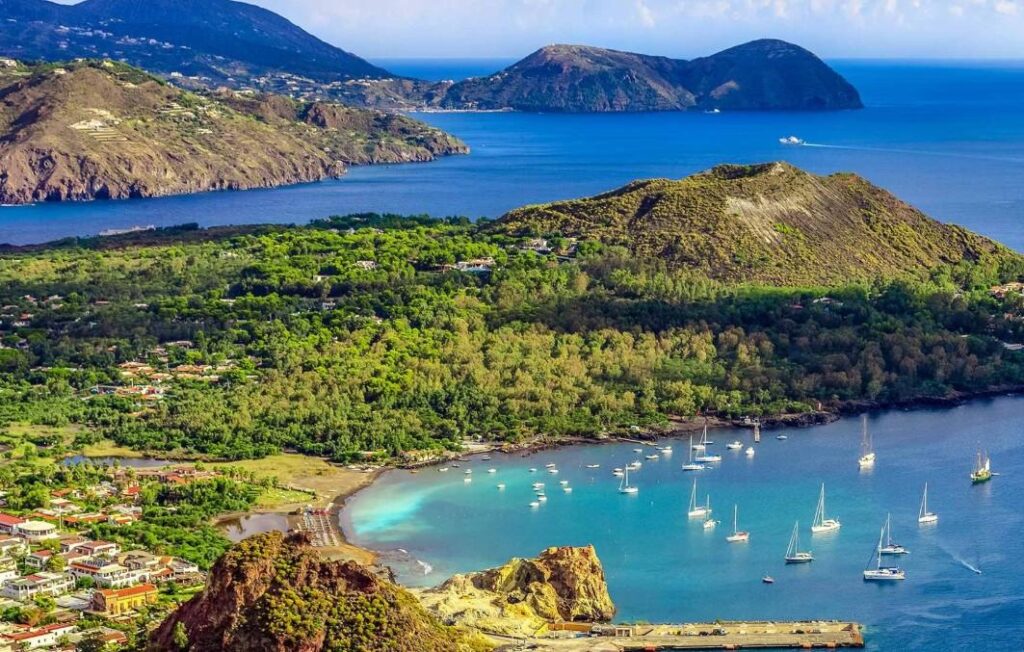
The Aeolian Islands are a stunning archipelago of seven volcanic islands located just off the northeastern coast of Sicily. Known for their dramatic landscapes, crystal-clear waters, and unique volcanic features, these islands offer a perfect escape for nature lovers, adventure seekers, and culture enthusiasts alike. Each island has its own distinct character, from the lively nightlife of Stromboli to the tranquil beaches of Panarea. Whether you’re hiking active volcanoes, exploring charming villages, or simply soaking up the Mediterranean sun, the Aeolian Islands promise an unforgettable experience.
🌟 Highlights of the Aeolian Islands
🌋 Active Volcanoes and Hiking Adventures
The islands are famous for their volcanic activity, particularly Stromboli, home to one of the world’s most active volcanoes. Visitors can take guided night hikes to witness spectacular eruptions lighting up the sky. On Vulcano, relax in natural hot springs and mud baths formed by volcanic activity.
🏝️ Idyllic Beaches and Crystal Waters
Each island offers beautiful beaches with clear, turquoise waters. Lipari, the largest island, boasts sandy shores and vibrant marina life. Panarea is known for its glamorous vibe and secluded coves, while Salina offers lush greenery and peaceful beaches.
🏘️ Charming Villages and Local Culture
Explore picturesque villages with narrow streets, traditional houses, and welcoming locals. Sample fresh seafood, local wines, and Aeolian specialties like malvasia wine and capers.
🚤 Boat Tours and Island Hopping
One of the best ways to experience the islands is by boat. Enjoy day trips that visit multiple islands, hidden caves, and volcanic fumaroles, with opportunities for swimming and snorkeling.
🚶 How to Get There
• By Ferry:
Ferries and hydrofoils connect the Aeolian Islands to Sicily’s mainland from ports such as Milazzo, Messina, and Palermo. Milazzo is the most common departure point, with regular services during the tourist season.
• By Air:
The nearest airports are in Catania and Palermo, followed by a ferry transfer to the islands.
🕒 Visitor Information
• Best Time to Visit:
Late spring to early autumn (May to September) offers warm weather, calm seas, and full ferry schedules. July and August are peak season.
• Entry Fees:
Most natural attractions and beaches are free, but some guided hikes or boat tours may charge fees.
• Time Needed:
To explore multiple islands, plan at least 4–5 days. A shorter visit can focus on one or two islands.
💡 Travel Tips
• 🥾 Prepare for Hiking:
Bring sturdy shoes and water for volcano hikes.
• 🕶️ Sun Protection:
The Mediterranean sun is strong; pack sunscreen, hats, and sunglasses.
• 🍽️ Taste Local Flavors:
Don’t miss fresh seafood dishes, pane cunzatu (seasoned bread), and the famous malvasia dessert wine.
• 🚤 Book Boat Tours in Advance:
Especially during peak season, tours and ferries can fill up quickly.
🌟 Individual Island Highlights
- Lipari: The largest island, offering archaeological sites, a charming old town, and beautiful beaches.
- Stromboli: Famous for its active volcano and spectacular night eruptions.
- Vulcano: Known for therapeutic mud baths and volcanic landscapes.
- Panarea: The smallest and most glamorous island, popular for nightlife and exclusive beaches.
- Salina: Lush and green, perfect for hiking, wine tasting, and quiet retreats.
- Filicudi & Alicudi: Remote islands ideal for nature lovers seeking tranquility and scenic beauty.
The Aeolian Islands are a captivating blend of natural wonders, vibrant culture, and Mediterranean charm. Whether you’re chasing volcanic thrills on Stromboli, relaxing in a seaside café on Lipari, or exploring the tranquil corners of Salina, the Aeolian Islands invite you to discover a unique slice of Sicily’s magic.
Marsala

Photo by Jonas Renner on Unsplash
Situated on the western tip of Sicily, Marsala is a captivating town known for its rich history, stunning coastline, and world-famous fortified wine. With its charming old town, ancient ruins, and beautiful nearby beaches, Marsala offers travelers a blend of cultural discovery, gastronomic delights, and seaside relaxation. Whether you’re exploring its historic sites or savoring a glass of the renowned Marsala wine, this town invites you to experience authentic Sicilian warmth and tradition.
🌟 Highlights of Marsala
🏛️ Historic Old Town
Wander through narrow cobblestone streets lined with Baroque churches, lively piazzas, and traditional Sicilian architecture. Key sights include Chiesa Madre and the Porta Garibaldi, a historic city gate.
🍷 Marsala Wine Cellars
Marsala is famous worldwide for its fortified wine. Visit local wineries such as Cantine Florio and Cantine Pellegrino to tour the cellars, learn about the wine-making process, and enjoy tastings of sweet and dry Marsala wines.
🏝️ Stagnone Nature Reserve and Salt Pans
Just outside town, this protected wetland area features stunning salt pans with windmills, flamingos, and other wildlife. The surreal landscape is especially beautiful at sunset.
🏺 Ancient Ruins of Lilibeo
Explore the archaeological site of Lilibeo, the ancient Phoenician and Roman settlement that gave Marsala its roots, including mosaics and remains of Roman villas.
🌅 Beaches and Islands
Nearby beaches like Lido Signorino offer sandy shores and crystal-clear waters. Take a boat trip to the Egadi Islands for snorkeling, diving, and unspoiled nature.
🚶 How to Get There
• By Car:
Marsala is accessible by road from Palermo (about 2 hours) and Trapani (about 40 minutes).
• By Train:
Regular train connections link Marsala to Palermo, Trapani, and other Sicilian cities.
• By Bus:
Bus services connect Marsala with regional towns and the airport.
🕒 Visitor Information
• Best Time to Visit:
Spring and autumn provide mild weather ideal for sightseeing and wine tours. Summer is perfect for beach lovers but can be busy.
• Entry Fees:
Most outdoor attractions and beaches are free. Wine cellar tours usually require a fee or reservation.
• Time Needed:
Plan at least one full day to explore the town and enjoy a wine tasting. Additional days allow for beach outings and nature excursions.
💡 Travel Tips
• 🍇 Book Wine Tours in Advance:
Popular wineries can fill up quickly, especially during the high season.
• ☀️ Pack for the Sun:
Bring sunscreen, a hat, and comfortable shoes for walking.
• 📸 Best Photo Spots:
Capture the colorful salt pans, charming old town streets, and stunning sunsets over the lagoon.
• 🍴 Try Local Cuisine:
Don’t miss fresh seafood dishes and Marsala’s signature desserts paired with local wine.
Marsala is a must-visit for those who love history, wine, and natural beauty. Its unique combination of cultural heritage and stunning landscapes makes it an ideal destination to experience Sicily’s authentic spirit. Whether savoring world-class Marsala wine or exploring ancient ruins, Marsala offers a rich and memorable journey.
🗓️ Best Time to Visit Sicily
Sicily enjoys a Mediterranean climate with long, hot summers and mild winters.
- Spring (April–June): Blooming flowers, perfect temperatures, and fewer crowds.
- Autumn (September–October): Warm seas and ideal weather for sightseeing and wine festivals.
- Summer (July–August): Lively and hot, great for beach lovers but can be crowded and scorching inland.
- Winter (November–March): Quieter, with mild weather in coastal towns, though some attractions may have limited hours.
👉 Best Overall Time: May–June and September–October for the perfect balance of weather, activities, and authentic local experiences.
💶 Currency in Sicily
- Currency: Euro (€)
- Credit/debit cards are widely accepted in cities and tourist areas.
- It’s wise to carry some cash for small shops, rural areas, or market purchases.
- ATMs are easy to find, but always notify your bank of international travel before you go.
✈️ Travel Tips for Visiting Sicily
- Language: Italian is the official language. English is spoken in tourist areas, but learning a few phrases in Italian is appreciated.
- Transport: Renting a car is recommended for exploring beyond the cities. Buses and trains connect major towns.
- Food & Drink: Sicily is a paradise for foodies—don’t miss arancini, cannoli, granita, and fresh seafood.
- Local Customs: Sicilians are warm and welcoming. Respect for family, tradition, and food is deeply rooted in daily life.
- Safety: Sicily is generally safe for tourists. Use common sense, especially in crowded areas.
💡 Final Thoughts
Sicily is not just a destination—it’s an experience of color, flavor, and timeless charm. Whether you’re walking through ancient temples, watching the sunset from a coastal village, or sipping wine in the hills, Sicily has a way of making you feel alive. Come for the history, stay for the warmth—and leave with memories that linger like the scent of lemon trees on the breeze.

I’m Shreyash Mhashilkar — a full-stack developer by profession, and a passionate explorer of the future at heart.
With a strong foundation in both front-end and back-end , I spend my days building websites and applications that are not just functional, but scalable, intuitive, and user-focused.

